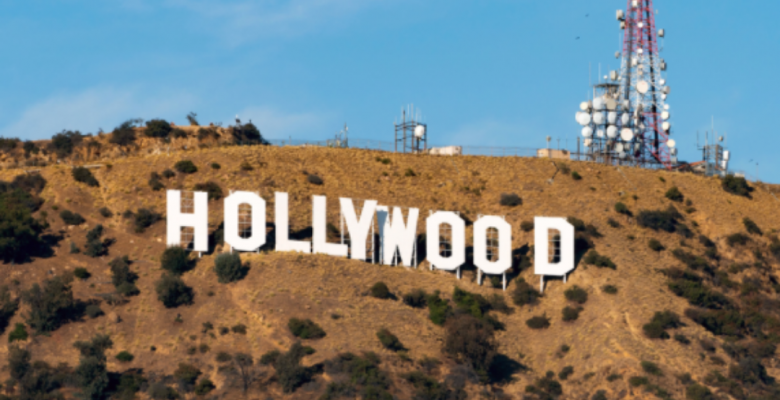Hollywood – From Its Very infancy to Where It Is Today
History
On January 22, 1947, the first commercial TV station west of the Mississippi River, KTLA, began operating in Hollywood. In December of that year, the first Hollywood movie production was made for TV, The Public Prosecutor. In addition, in the 1950s, music recording studios and offices began moving into Hollywood. Other businesses, however, continued to migrate to different parts of Los Angeles, primarily to Burbank, California. A lot of the movie industry remained in the area, although the district’s outward appearance changed.
The famous Capitol Records building on Vine Street just north of Hollywood Boulevard was built in 1956. It is a recording studio not open to the public, but its unique circular design looks like a stack of old 45rpm vinyl records.
The Hollywood Walk of Fame was created in 1958 and the first star was placed in 1960 as a tribute to artists working in the entertainment industry. Honorees receive a star based on career and lifetime achievements in motion pictures, live theatre, radio, television, and/or music, as well as their charitable and civic contributions.
Progress
In 1985, the Hollywood Boulevard commercial and entertainment district was officially listed in the National Register of Historic Places protecting important buildings and seeing to it that the significance of Hollywood’s past would always be a part of its future.

In June of 2005, the long-awaited Hollywood extension of the Metro Red Line subway opened, running from Downtown Los Angeles to the Valley, with stops on Hollywood Boulevard at Western Avenue, at Vine Street and at Highland Avenue.
The Kodak Theatre, which opened in 2001 on Hollywood Boulevard, where the historic Hollywood Hotel once stood, has become the new home of the Oscars.
In 2002, a number of Hollywood citizens began a campaign for the district to secede from Los Angeles and become its own incorporated city. Secession supporters argued that the leaders of Los Angeles were ignoring the needs of their community. In June of 2006, the prestigious task force recommended that the city of Los Angeles incorporate Santa Monica for incorporation, as it was a more appropriate home for historic buildings and the surrounding area was home to many historical homes. The following year, the Santa Monica City Council adopted the agenda item “Formation of the Santa Monica City Group” and in May of 2007, the Santa Monica City Group formally adopted The City of Santa Monica Charter.
The Santa Monica City Charter Act requires that the city maintain its essential services, provide for an appeals process in all Areas of Concern, maintain broad public access and provide minimum standards for affordable and high quality housing. It also requires the Mayor, 20 city council members and the Santa Monica Creek Metropolitan Planning Agency to be responsible for the consolidated control of all Areas of Concern within the city. Prior to the passage of the Charter’s review in 2007, the Mayor’s Office had extensive ties with a private developer who had proposed major construction in the heart of the city. The review resulted in theiniest possible city: an empty plot in a convenient location between the Santa Monica Pier and the Beverly Hills Hotel.
Since that time, more than 120 new residential and hotel towers have sprung up,door-to-door, and government officials estimate that by 2012, half of Southern California’s hotel rooms will be within the new planned district. “This is definitely a win for everyone involved,” said Santa Monica Mayor Cheryl Ree. “My budget has been completely eliminated. All we have to do is grow.”
hemisphere way
The Santa Monica Bay region is served by a number of freeways, including the Santa Monica Pre-Paid Parking Program (SMPG) on Interstate 10, the Santa Monica Freeway (Santa Monica Blvd.) on Interstate 405, the Santa Monica California State Highway ( Supposedly Named after the Italian Sicilian word for “s fortitude”), Chessierows Avenue and Highland Avenue. The city also has a free public beach for recreational use at Pinnacle Beach with changing levels throughout the summer months.
Get more information on the city athttp://www.santamonica.comor call 800-500-5110.
